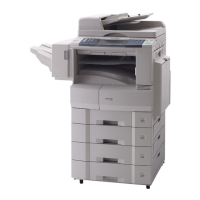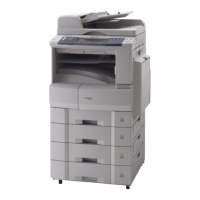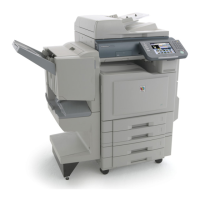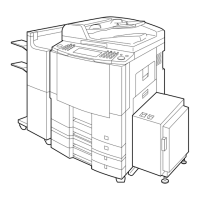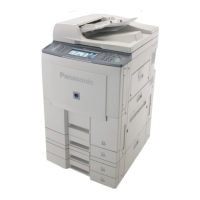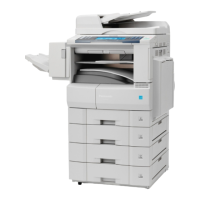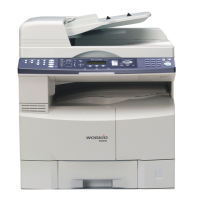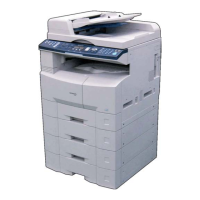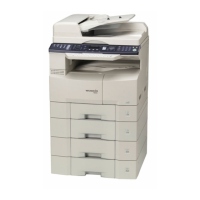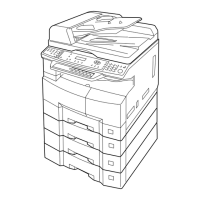503
JAN 2006
Ver. 5.2
DP-3510/3520/3530/4510/4520/4530/6010/6020/6030
11.1.2.1.2. Outline of Electrical Circuitry
The Finisher's sequence of operation is controlled by the Finisher Controller PCB. The Finisher Controller
PCB is a 16-bit microprocessor (CPU), and is used for communication with the Copier (serial) in addition to
controlling the finisher's sequence of operations.
The Finisher Controller PCB responds to the various commands coming from the Copier through a serial
communications line to drive solenoids, motors, and other components. In addition, it communicates the
Finisher's various states (information on sensors and switches) to the Copier through a serial
communications circuit.
The Finisher Controller PCB not only communicates with the Saddle Stitch Controller PCB but also
communicates the Saddle Stitch Unit's various states (information on sensors and switches) to the Copier.
The ICS used on the Finisher Controller PCB are designed for the following:
•Q1 (CPU)
Controls sequence of operations.
• Q2 (EP-ROM)
Backs up adjustment values.
•Q7
Contains sequence programs.
• Q8 / Q89 (RAM)
Backs up initial setting data.
• Q4 (communications IC)
Communicates with the copier and the saddle stitch unit.
• Q14 (regulator IC)
Generates 5V.
Flow of signals between the finisher and the options controller:
Fig. 2-002
Saddle Stitch
Controller PCB
Punch Driver PCB
(Punch Unit
(optional))
Copier
(DC Controller PCB
PCU)
Finisher Controller
PCB communication
Q1
CPU
Q2
EEP-ROM
Q4
IC
Q7
EP-ROM
Q8/Q89
RAM
Q14
Regulator IC
Motor
Solenoid
Switch
Sensor
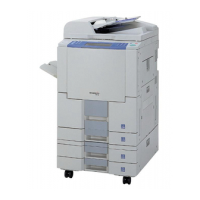
